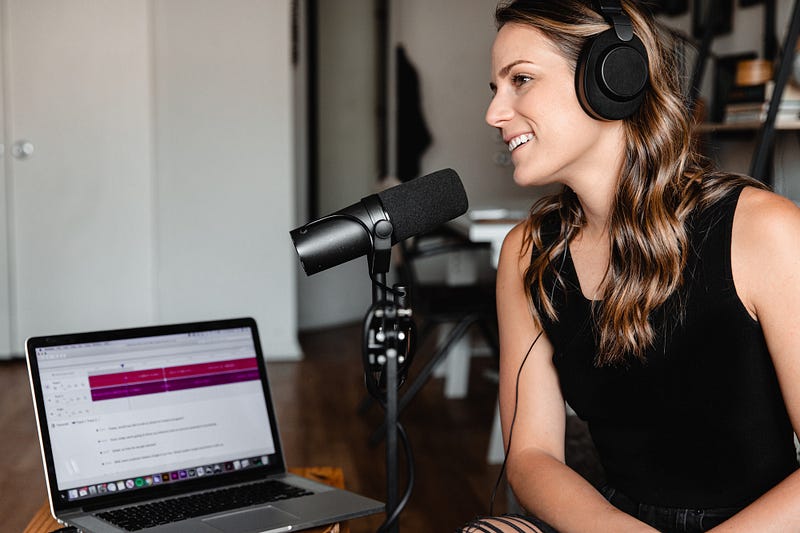Navigating the Podcast Ad Labyrinth: Guide to Podcast Buying
Podcasts have grown in popularity in recent years, and advertising on this platform has become a must for brands looking to reach a highly engaged audience.
Podcasts have grown in popularity in recent years, and advertising on this platform has become a must for brands looking to reach a highly engaged audience. Self-service podcast buying platforms have made it easier than ever to advertise on podcasts, allowing marketers to take full control of their campaigns. In this step-by-step guide, we’ll walk you through the process of self-service podcast buying to help you maximize your reach and ROI.

Define Your Advertising Goals
Before diving into the world of podcast advertising, it’s essential to establish your campaign goals. Are you looking to increase brand awareness, drive website traffic, or promote a specific product or service? Knowing your objectives will guide your advertising strategy and ensure you’re targeting the right audience. Be specific and realistic when setting your goals, as this will help you measure your campaign’s success later on.
Additionally, you should consider the key performance indicators (KPIs) that align with your goals. For example, if you’re looking to increase brand awareness, your KPIs might include impressions, reach, or the number of new followers on your social media channels. On the other hand, if your goal is to drive website traffic, you’ll want to track metrics like click-through rate, bounce rate, and average time spent on your site.
Research Your Target Audience
Understanding your target audience is crucial for a successful podcast advertising campaign. Consider the demographics, interests, and listening habits of your ideal customer. This information will help you identify the most suitable podcasts and ad formats to reach your target market. Start by creating a buyer persona, a detailed profile of your ideal customer, which can include factors like age, gender, income, location, and interests.
Once you have a clear idea of who your target audience is, dive deeper into their podcast listening habits. Research popular podcasts and genres that resonate with your target demographic. Listen to a few episodes to get a sense of the content and style, and take note of any recurring themes or topics that could align with your brand. This will help you create a shortlist of potential podcasts for your advertising campaign.

Set Your Budget
Determine your advertising budget by considering factors like your overall marketing spend and the potential ROI for your podcast campaign. Keep in mind that podcast advertising rates can vary based on factors such as podcast popularity, ad format, and ad placement within the episode. Having a clear budget in mind will help you make informed decisions when choosing a self-service podcast buying platform and selecting the podcasts you want to advertise on.
When setting your budget, it’s also essential to allocate funds for different aspects of your campaign, such as ad production, platform fees, and any additional marketing materials you may need. Consider whether you’ll be producing the ad in-house or hiring a professional to create it for you, as this can significantly impact your budget. It’s also a good idea to set aside a contingency fund for any unexpected expenses that may arise during your campaign.
Choose a Self-Service Podcast Buying Platform
Select a self-service podcast buying platform that aligns with your goals, budget, and target audience. Some popular options include AdvertiseCast, Midroll, and Podcorn. Each platform has its own unique features, so take the time to research and compare them before making a decision. Look for a platform that offers a wide variety of podcasts, targeting options, and ad formats to ensure you have the flexibility to create a campaign that meets your objectives.
When evaluating self-service platforms, consider factors such as user-friendliness, customer support, and reporting capabilities. A platform with a user-friendly interface will make it easier for you to navigate and manage your campaign, while strong customer support can help you quickly resolve any issues that may arise. Additionally, robust reporting capabilities are essential for tracking your campaign’s performance and making data-driven decisions to optimize your results.

Identify Potential Podcasts for Advertising
With your target audience and budget in mind, use your chosen self-service platform to search for suitable podcasts to advertise on. Look for podcasts that align with your target audience’s interests and have a track record of high engagement rates. Don’t limit yourself to only the most popular shows; often, niche podcasts with smaller but dedicated audiences can deliver better results, as they cater to a more specific demographic.
Listen to a few episodes of the podcasts on your shortlist to get a feel for their content and style. Pay attention to the host’s personality and the type of ads they run, as this can impact how well your ad will resonate with their audience. Reach out to the podcast hosts or their representatives to inquire about their audience demographics and engagement rates, as well as any case studies or testimonials from previous advertisers. This information will help you make an informed decision when selecting the podcasts for your campaign.
Choose Your Ad Format and Placement
Podcast advertising typically comes in three formats: pre-roll, mid-roll, and post-roll ads. Pre-roll ads are played at the beginning of the episode, mid-roll ads are inserted during a break in the content, and post-roll ads are placed at the end of the episode. Each format has its advantages and drawbacks, so consider your campaign goals and target audience when making your decision.
In addition to selecting an ad format, consider the placement of your ad within the chosen format. For example, if you opt for a mid-roll ad, you may want to choose a specific time stamp or segment within the episode that aligns with your ad’s content. Some self-service platforms allow you to select the ad placement, while others may assign it automatically. Be sure to clarify this with your chosen platform before launching your campaign.

Create Engaging Ad Content
Once you’ve selected your podcasts, ad format, and placement, it’s time to create your ad content. Craft a compelling script that clearly communicates your brand message, highlights the unique selling points of your product or service, and includes a strong call-to-action (CTA). Be mindful of the podcast’s tone and style, and try to create an ad that feels natural and engaging within the context of the show.
Consider whether you want the podcast host to read your ad (host-read) or if you’ll provide a pre-recorded ad (produced). Host-read ads can be more effective, as they leverage the host’s credibility and connection with their audience. However, they may also require more collaboration and communication between you and the host. If you opt for a produced ad, ensure it is professionally recorded and edited to maintain high-quality standards.
Launch and Monitor Your Campaign
With your ad content ready, use your self-service platform to set up and launch your campaign. Be sure to include your desired start and end dates, ad placements, and any specific targeting options available on the platform. Once your campaign is live, monitor its performance closely using the platform’s reporting tools.
Track the KPIs you identified earlier and assess how well your campaign is meeting its goals. If necessary, make adjustments to your ad content, targeting, or budget to optimize your results. Regularly communicating with the podcast hosts or their representatives can also provide valuable insights into your campaign’s performance and help identify areas for improvement.

Analyze and Optimize Your Campaign
After your campaign has run its course, take the time to analyze its performance in detail. Compare your results to your initial goals and KPIs to determine the success of your campaign. Identify areas where your campaign excelled, as well as areas where it fell short. This analysis will provide valuable insights for future podcast advertising campaigns and help you refine your strategy.
To optimize your campaign, consider testing different ad formats, placements, or targeting options to see what resonates best with your audience. You may also want to experiment with varying your ad creative, such as changing the script, using different music, or adjusting the tone of the ad. By continually testing and iterating on your campaign, you’ll be able to identify the most effective strategies for your brand and maximize your return on investment.
Evaluate the Long-Term Impact of Your Podcast Advertising
While it’s essential to analyze the immediate results of your campaign, it’s also crucial to consider the long-term impact of your podcast advertising efforts. Podcast ads have the potential to create lasting brand awareness and customer loyalty, especially if your ads resonate with the audience and provide value.
To evaluate the long-term impact, track metrics like customer retention, lifetime value, and brand sentiment over time. You may also want to conduct surveys or collect feedback from customers who discovered your brand through podcast advertising. This data will help you assess the overall effectiveness of your podcast advertising strategy and guide your future marketing efforts.
Final Thoughts
Self-service podcast buying offers brands an accessible and effective way to reach highly engaged audiences through podcast advertising. By following this step-by-step guide, you’ll be well-equipped to create a successful podcast advertising campaign that aligns with your goals, targets the right audience, and delivers a strong return on investment. Remember that the key to success is continuous improvement — regularly analyze and optimize your campaigns to ensure your brand stays relevant and engaging in the ever-evolving podcast landscape.
